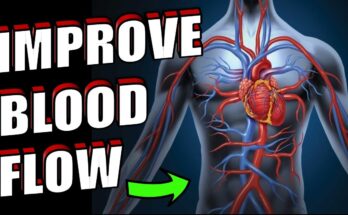Spinal Arteriovenous Malformation Treatment: Spinal arteriovenous malformation (AVM) is a rare, abnormal tangle of blood vessels in the spinal cord.
Accurate diagnosis and effective treatment are crucial to prevent serious complications, such as paralysis.
Understanding spinal AVM is essential for timely intervention and management, highlighting the importance of awareness and specialized care in treating this complex condition.
Understanding Spinal Arteriovenous Malformations
Spinal arteriovenous malformations (AVMs) are rare, complex conditions that involve abnormal connections between arteries and veins in the spinal cord. These connections can disrupt the normal flow of blood, leading to potential damage to spinal tissues. Understanding the types, statistics, symptoms, and risk factors of spinal AVMs is crucial for early diagnosis and effective management.
Types of Spinal AVMs
Spinal AVMs are categorized into several types based on their location and the specific characteristics of the abnormal blood vessel connections:
- Type I – Dural Arteriovenous Fistula (DAVF): The most common type, where arteries connect directly to veins on the outer part of the spinal cord.
- Type II – Intramedullary AVM: These AVMs are located within the spinal cord tissue itself and are more likely to cause bleeding.
- Type III – Juvenile AVM: These are larger and involve more complex vessel abnormalities. They are often associated with significant bleeding and neurological deficits.
- Type IV – Perimedullary AVM: These AVMs involve abnormal connections that occur on the surface of the spinal cord but do not penetrate into the spinal tissue.
Understanding the type of AVM is crucial for determining the most appropriate treatment strategy.
Statistics: Incidence and Prevalence
Spinal AVMs are relatively rare. They account for:
- Approximately 3-4% of all spinal vascular malformations.
- An estimated incidence of about 1 in 100,000 people annually.
- A prevalence that remains low due to the rarity of the condition.
These statistics highlight the importance of specialized knowledge and treatment centers for managing this complex condition.
Key Symptoms and Risk Factors
The symptoms of spinal AVMs can vary widely but typically include:
- Pain: Often localized in the back, which may be intense and worsen over time.
- Neurological impairments: Such as muscle weakness, numbness, or tingling in limbs.
- Bladder and bowel dysfunction: Due to the location of the AVM near nerves that control these functions.
The risk factors for developing spinal AVMs include:
- Genetic predisposition: Family history of AVMs increases the risk.
- Gender: Males are slightly more likely to develop certain types of AVMs than females.
- Age: Most spinal AVMs are diagnosed in young adulthood, but they can occur at any age.
For anyone experiencing symptoms or with risk factors for spinal AVMs, consulting a healthcare provider for evaluation and possible imaging tests is advised to confirm the diagnosis and begin appropriate treatment.
Diagnostic Approaches for Spinal Arteriovenous Malformation (AVM)
Effective diagnosis is crucial for appropriate management and treatment. Here, we outline the essential diagnostic approaches for identifying and evaluating spinal AVMs.
Initial Evaluation and Medical History Importance
The diagnostic process for spinal AVM begins with a comprehensive initial evaluation and review of the patient’s medical history. This step is vital as it helps in:
- Identifying Symptoms: Common symptoms of spinal AVM include back pain, muscle weakness, and sensory disturbances. Early identification can lead to timely diagnosis.
- Assessing Risk Factors: Family history of AVMs, genetic disorders, and previous spinal injuries can increase the risk of developing spinal AVMs.
- Guiding Further Testing: Information gathered during this phase helps in deciding the subsequent diagnostic tests and imaging techniques.
Imaging Techniques
Imaging techniques are central to the diagnosis of spinal AVMs, providing detailed views of the spinal cord and associated vascular structures. Key imaging modalities include:
- MRI (Magnetic Resonance Imaging): MRI is the most sensitive imaging technique for spinal AVM, offering detailed images of both the bones and soft tissues including the blood vessels.
- CT (Computed Tomography) Scan: Often used in conjunction with MRI, CT scans provide excellent detail of the bone structure and can help detect changes in the bone associated with AVM.
- Spinal Angiography: This is a more invasive procedure where a contrast dye is injected into the spinal arteries, making the vascular structures visible on X-ray images. It is crucial for planning treatment as it delineates the architecture of the AVM.
Advanced Diagnostic Tools and Technologies
Recent advancements in diagnostic technologies have significantly improved the accuracy and ease of diagnosing spinal AVMs:
- 3D Angiography: Offers three-dimensional views of the spinal blood vessels, providing critical information for surgical planning.
- Functional MRI: Assesses the spinal cord’s functional activity, helping in understanding the impact of AVM on spinal cord function.
- Intravascular Ultrasound: Used during angiography to give real-time images of the blood vessels, enhancing the accuracy of the diagnosis.
Role of Differential Diagnosis
Differential diagnosis is crucial in distinguishing spinal AVM from other conditions with similar symptoms, such as tumors, herniated discs, or other vascular malformations. This involves:
- Comparing Symptoms: Differentiating symptoms that are unique to spinal AVM versus other spinal conditions.
- Utilizing Specific Tests: Certain tests are more definitive for spinal AVM, such as specific MRI sequences or the detailed vascular imaging seen in spinal angiography.
- Consulting with Specialists: Involvement of specialists such as neurologists, neurosurgeons, and interventional radiologists, who can provide insights based on their expertise in related conditions.
However, each of these diagnostic steps plays a pivotal role in the accurate and efficient diagnosis of spinal AVM, paving the way for effective treatment and better patient outcomes.
Treatment Options for Spinal Arteriovenous Malformation
Here, we explore the various methods employed to treat spinal AVM, emphasizing the role of radiosurgery and highlighting recent innovations in treatment techniques.
Surgical Removal
Surgical intervention is often considered the primary treatment for spinal AVMs, especially when the malformation is accessible and poses a significant risk of bleeding or progressive neurological decline. The goal of surgery is to remove the AVM completely, thereby eliminating the risk of hemorrhage and stabilizing or improving the patient’s neurological function.
Endovascular Embolization
Endovascular embolization is a minimally invasive procedure that involves inserting a catheter into the affected artery and injecting a substance to block the abnormal blood vessels. This treatment can be used as a standalone procedure or as a pre-surgical measure to reduce the size of the AVM and minimize bleeding during surgery.
Radiosurgery
Radiosurgery, particularly stereotactic radiosurgery (SRS), plays a crucial role in the treatment of spinal AVMs. This non-invasive technique uses focused radiation beams to target and destroy the abnormal blood vessels, offering a safer alternative for patients who are not candidates for conventional surgery. Radiosurgery is highly precise and can effectively reduce the size of the AVM over time, leading to a gradual resolution of symptoms.
Role of Radiosurgery in Spinal AVM Treatment
- Precision: Radiosurgery offers targeted treatment, minimizing damage to surrounding healthy tissues.
- Safety: It provides a non-invasive alternative to open surgery, which is particularly beneficial for patients with high surgical risks.
- Efficacy: Radiosurgery has been shown to successfully obliterate spinal AVMs in a significant number of cases, with fewer complications and a shorter recovery period compared to traditional surgery.
Innovations in Treatment Techniques
Recent years have seen significant advancements in the treatment of spinal AVMs. Innovations include:
- Improved Imaging Techniques: Enhanced MRI and CT scan technologies offer more precise visualization of the AVM structure, aiding in accurate diagnosis and targeted treatment planning.
- Advanced Catheter Technologies: Newer catheter designs provide better navigation through complex vascular structures, increasing the success rate of embolization procedures.
- Genetic Research: Ongoing research into the genetic factors contributing to the development of spinal AVMs may lead to personalized medicine approaches in the future.
- Regenerative Medicine: Studies into stem cell therapy and other regenerative techniques hold promise for restoring function to spinal tissues damaged by AVMs.
However, as research progresses and technologies advance, further enhancements in the safety, efficacy, and accessibility of these treatments are anticipated.
Challenges in Treating Spinal Arteriovenous Malformation
Treating this condition presents significant challenges due to its complexity and the critical nature of the spinal cord. Below, we delve into the intricacies of treatment planning, potential complications, and the crucial role of multidisciplinary care.
Complexities of Treatment Planning
- Accurate Diagnosis: The initial step in treatment planning involves precise imaging techniques like MRI and angiography to map the AVM accurately. This is crucial as the exact location and characteristics of the AVM dictate the treatment approach.
- Choosing the Right Treatment Method: Treatment options include conservative management, embolization, surgery, or a combination. Each method comes with its own set of risks and benefits, and choosing the right approach depends on the AVM’s size, location, and the patient’s overall health.
- Risk of Recurrence: Spinal AVMs can recur even after treatment. This requires ongoing monitoring with imaging studies, making the treatment planning a long-term, dynamic process.
Potential Complications and Management
- Hemorrhage: One of the most severe complications is bleeding in the spinal cord, which can lead to paralysis. Immediate intervention with surgical or endovascular techniques is critical to manage this risk.
- Neurological Deficits: Surgical and embolization procedures carry a risk of damaging spinal cord tissue, potentially leading to sensory or motor deficits. Careful planning and execution of the procedure by experienced specialists are essential to minimize this risk.
- Infection: Like any invasive procedure, there is a risk of infection. Strict sterile techniques and prophylactic antibiotics are standard practices to prevent this complication.
Importance of Multidisciplinary Care
- Collaborative Expertise: A team comprising neurosurgeons, interventional radiologists, physiatrists, and rehabilitation specialists ensures a comprehensive approach to treatment, tailoring it to the individual needs of the patient.
- Comprehensive Management: Post-treatment, patients often require rehabilitation to manage disabilities and improve quality of life. A multidisciplinary team is crucial in providing holistic care, from acute management to long-term rehabilitation.
- Patient and Family Education: Educating the patient and family about the nature of the condition, potential risks, and the need for follow-up care is essential for successful outcomes. This educational role is best fulfilled through the collaborative efforts of the entire healthcare team.
However, the involvement of a multidisciplinary team is essential not only for managing the immediate complexities but also for ensuring long-term health and well-being of the patient.
Outcomes and Prognosis of Spinal Arteriovenous Malformation
What Patients Can Expect After Treatment
Treatment for spinal arteriovenous malformation (AVM) is highly specialized and tailored to each individual’s condition. Post-treatment, patients can expect a period of recovery that varies in length, depending on the severity of the AVM and the type of treatment received. Commonly, patients may experience relief from symptoms such as pain or muscle weakness, which had been caused by the AVM. However, some symptoms may persist, especially if there was nerve damage prior to treatment.
Recovery often involves rehabilitation services, including physical therapy to help regain strength and mobility, and occupational therapy to assist in adapting to any residual challenges. It is important for patients to closely follow their healthcare provider’s advice and attend all follow-up appointments to monitor their progress.
Statistics on Recovery and Quality of Life Improvements
Statistically, the outcomes for patients with spinal AVM can be quite promising, especially when diagnosed and treated early. Studies show that approximately 50-70% of patients experience significant improvement in symptoms and overall quality of life post-treatment. The success of treatment largely depends on factors such as the size and location of the AVM and whether it has led to significant neurological damage before being addressed.
Long-term recovery statistics indicate that timely and effective treatment can stabilize the condition and prevent further damage, with many patients returning to a normal or near-normal quality of life. However, the prognosis can vary, and some individuals may face ongoing challenges related to the condition.
Ongoing Care and Monitoring Requirements
Ongoing care and monitoring are crucial for patients who have undergone treatment for spinal AVM. Regular follow-up visits are necessary to assess the stability of the AVM and to check for any signs of recurrence. These appointments typically involve imaging tests such as MRI or angiography to visualize the spinal cord and blood vessels.
Patients may also need to manage associated conditions such as pain or bladder and bowel dysfunction with the help of medication, physical therapy, or other specialized treatments. Lifestyle adjustments and support from pain management specialists or neurologists are often recommended to help manage any long-term symptoms.
Additionally, patients are advised to stay vigilant for any new symptoms that could suggest complications or recurrence of the AVM. Prompt communication with healthcare providers about any changes in symptoms is essential for maintaining health and preventing complications.
By understanding the expected outcomes, recovery statistics, and ongoing care requirements, patients with spinal AVM and their families can be better prepared to handle the challenges post-treatment and maximize the quality of life.
FAQs about Spinal Arteriovenous Malformation Treatment
What is spinal arteriovenous malformation (AVM)?
Spinal AVM refers to an abnormal tangle of blood vessels in or around the spinal cord where arteries connect directly to veins without the usual capillaries in between. This can disrupt normal blood flow and oxygen circulation, potentially leading to spinal damage.
What are the symptoms of a spinal AVM?
Symptoms of spinal AVM can vary widely but often include sudden severe back pain, muscle weakness or paralysis, loss of sensation, and difficulties with bowel and bladder function. These symptoms can progressively worsen over time.
How is spinal AVM diagnosed?
Diagnosing spinal AVM typically involves imaging studies such as MRI (Magnetic Resonance Imaging) or a spinal angiogram. These tests help visualize the blood vessels and assess the extent of the malformation.
What are the treatment options for spinal AVM?
Treatment options for spinal AVM depend on the size, location, and severity of the malformation. They may include conservative management like observation and medication, endovascular embolization (using materials to block abnormal blood vessels), surgery to remove the AVM, or radiation therapy to shrink it.
Is surgery for spinal AVM risky?
Surgery for spinal AVM can be complex and carries risks such as bleeding, infection, worsening of neurological symptoms, and, in rare cases, paralysis. The specific risks depend on the AVM’s location and the patient’s overall health.
Can spinal AVM recur after treatment?
Yes, there is a possibility of recurrence even after treatment. Regular follow-up with imaging tests is crucial to monitor for any signs of recurrence and manage them promptly.
What is the recovery process like after treatment?
Recovery after spinal AVM treatment varies based on the type of treatment received and the individual’s condition. It typically involves rest, rehabilitation exercises, and follow-up visits to monitor healing and manage symptoms.
Conclusion
Looking ahead, the future of spinal AVM treatment appears promising. Ongoing research and technological innovations are expected to yield new treatment modalities and improve existing ones. The development of less invasive surgical techniques and the refinement of radiosurgical options offer hope for safer procedures with fewer complications and quicker recovery times. Additionally, there is a growing focus on personalized medicine approaches that tailor treatments to individual patient genetics and the specific characteristics of their AVM.
As we continue to explore these avenues, collaboration across neurosurgical, radiological, and genetic research disciplines will be crucial. The ultimate goal remains clear: to enhance the quality of life for patients with spinal AVM through more effective and efficient diagnostic and treatment strategies.
References
For those seeking further information or validation of the treatments available for spinal arteriovenous malformation (AVM), consulting reputable sources is crucial. Below are carefully selected references that provide detailed insights and up-to-date research findings:
- National Institutes of Health (NIH) – Explore extensive articles and research papers on the latest treatment options for spinal AVM, including surgical procedures and outcomes. Visit their site at NIH Spinal AVM Resources.
- Mayo Clinic – Known for its patient-friendly approach and expert medical content, the Mayo Clinic offers a comprehensive overview of spinal arteriovenous malformation symptoms, causes, and treatment modalities. Access their detailed guide at Mayo Clinic’s Spinal AVM Treatment.
- American Association of Neurological Surgeons (AANS) – AANS provides in-depth medical papers and treatment guidelines authored by leading neurosurgeons specializing in spinal conditions. Their resources can be found at AANS Spinal AVM Information.
These resources are excellent starting points for patients, caregivers, and medical professionals interested in understanding the complexities of spinal arteriovenous malformations and the latest advancements in treatment options.



